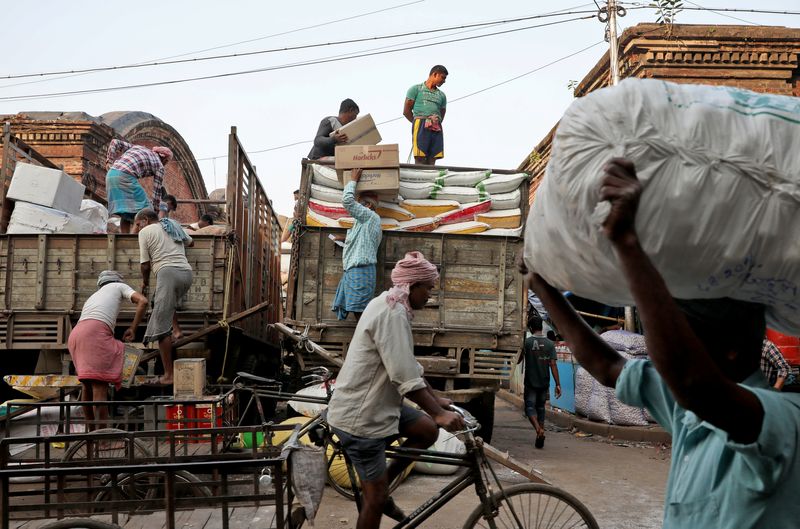By Rodrigo Campos
NEW YORK (Reuters) - The International Monetary Fund on Monday raised its output growth estimate on emerging markets for this year, with projections now showing the economic slowdown in the region may have bottomed out in 2022, on the back of China reopening, a resilient India and unexpected growth in Russia.
On its most recent update to the World Economic Outlook, the IMF sees growth in emerging market and developing economies at 4.0% in 2023, 0.3 percentage point higher than its October projection, and 0.1 percentage point higher than the 3.9% estimate for 2022. For 2024, the projection is for a 4.2% expansion.
Inflation, a recent hamper on growth, is seen high although continuing to slow this year and next. Emerging and developing economies are seen having posted price increases of 9.9% in 2022, then slowing to 8.1% in 2023 and 5.5% in 2024, still above the 4.9% average in 2017–2019.
Some 15% of low-income countries are estimated to be already in debt distress and 45% more are at high risk of getting there, with 1-in-4 emerging market economies also at high risk.
Leading the growth charge in 2023, India continues to be seen growing over 6% this year and next, while the upward revision of China by 0.8 percentage point sets it on track for growth above 5% this year.
"If we look at both China and India together, they account for about 50% of world growth in 2023 ... so a very significant contribution," said Pierre-Olivier Gourinchas, chief economist and director of the research department at the IMF.
Russia, on the other hand, has seen a 2.6 percentage point increase in the 2023 growth projection, which translates to a view of a 0.3% expansion this year. It is by far the biggest positive revision among the largest economies.
The Russia revisions are mostly due to "fairly high" export revenue last year as well as the strong fiscal stimulus from Moscow, partly in military spending. However, over the medium term, there is still a massive drop in output forecast for Russia and tied to its invasion of Ukraine.
"If you look at (2027) as the medium term and you compare that level to what it was prior to the war, that gap is about 9% of GDP, so it's still quite substantial," said Petya Koeva-Brooks, deputy director of the IMF's research department.
Growth in Middle Eastern and Central Asian economies is seen slowing this year to 3.2%, 0.4 percentage point lower than the October estimate, partly due to effects of the war in Europe.
The regional revision mainly reflects "the downgrades in both Egypt and Saudi Arabia, and that's in part on account of the impact of the war in Ukraine and the impact it had on commodity prices," Gourinchas said. As for Saudi Arabia, he added, the decline in crude oil production as part of the OPEC plus agreement also weighed.
"The situation is quite difficult for the oil importers in the region and many of them are heavily indebted, so the still-high food prices and energy prices are a major burden," said Koeva-Brooks. "The cost-of-living crisis is alive and well in that region, so there is also the risk of social unrest."
Brazil and Mexico, Latin America's largest economies, were both upwardly revised in their 2023 economic growth by 0.2 and 0.5 percentage point, respectively. For Latam and the Caribbean, the overall increase in the growth estimate was just 0.1 percentage point, to 1.8%.
Despite the expectation for faster growth in the coming years for EM, taken individually, about half of these economies have lower growth projections in 2023 than their 2022 estimate, according to the IMF.

The estimates come with the backdrop of a slight increase in the 2023 global growth outlook helped by "surprisingly resilient" demand in the United States and Europe, an easing of energy costs and the reopening of China's economy after Beijing abandoned its strict COVID-19 restrictions.
Among the downside risks to the projections, the IMF said, are a stalling out of the Chinese economic rebound, and a further escalation of the war in Ukraine which could also exacerbate inflation.